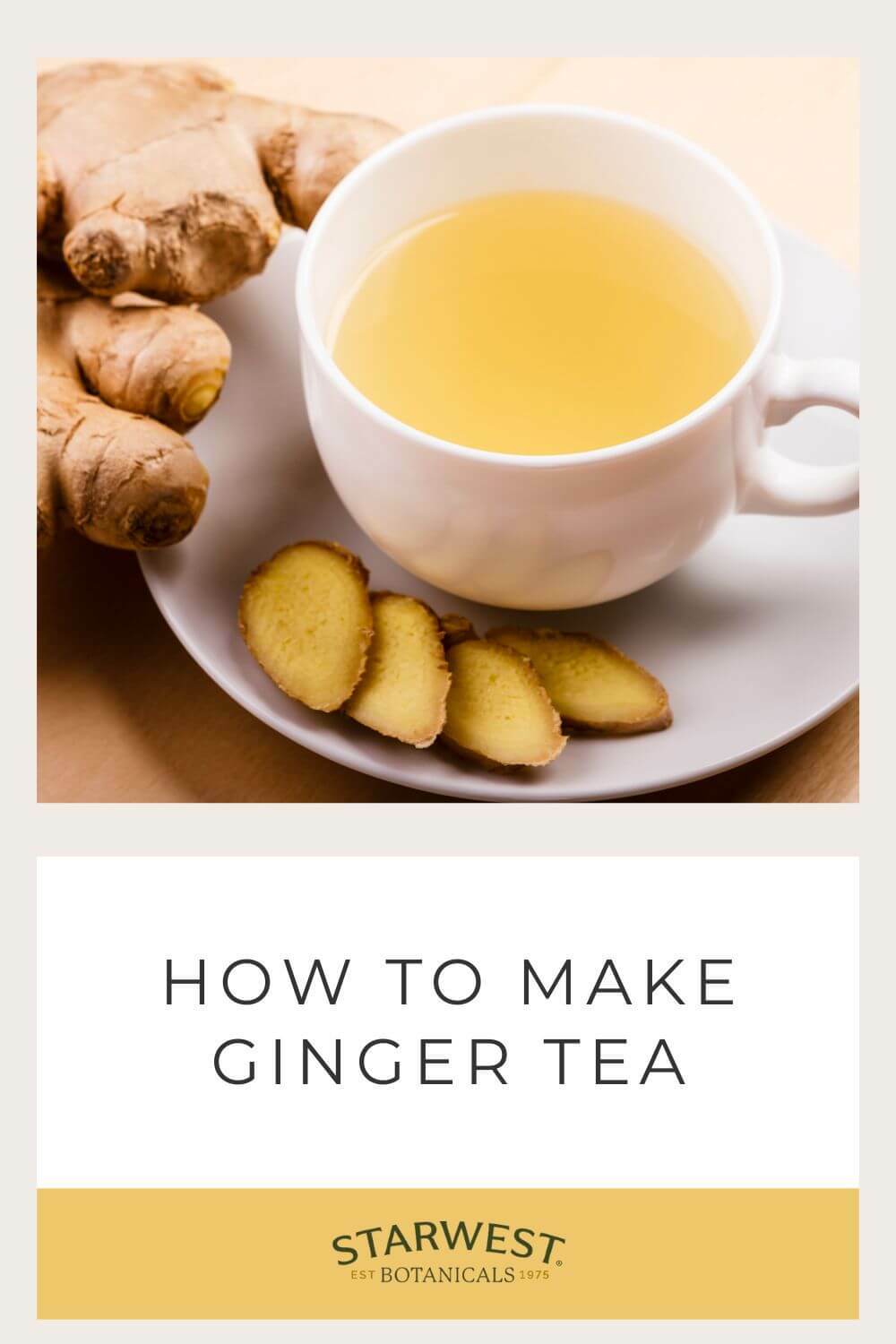How to Make Ginger Tea | Starwest Botanicals | Starwest Botanicals
Posted by Molly McConnell on 03-19-2024

When it comes to seasonal wellness and digestive support, ginger has got you covered! Widely used by traditional Ayurvedic physicians for thousands of years, ginger is referred to as vishwabhesaj in Sanskrit, or “The Universal Medicine''.
When seeking ginger root, you will likely come across it in several common forms. I’m going to teach you how to make herbal tea using three different forms of ginger, so you know how to work with whichever one you have on hand. These three forms include: ginger powder, cut and sifted ginger, and fresh ginger root. All three versions of ginger are all derived from the rhizome of the plant, rather than the leaves, flowers, or seeds.
If you’re not sure which of these three forms to choose, consider your Ayurvedic constitution. Ayurveda has developed a very helpful framework that allows each individual to understand their unique constitution and present state of imbalance, based on the elements. Within this framework, the five elements are grouped into three categories, called the doshas. Each represents a different Mind Body Type.
Vata dosha represents the air and space elements within us. Those with a vata constitution tend to embody lots of imagination, adaptability and enthusiasm. On the flip side, vata people may struggle with anxiousness, restlessness, gas and bloating. Ginger is great for vata in all forms because it has a warming quality that balances the coldness that vata people are often prone to.
Pitta dosha represents the fire element within us. Those with a pitta constitution tend to embody lots of passion, discernment and focus. On the flip side, pitta people may also struggle with irritability, burnout, headaches and IBS. Fresh ginger root is best for pittas because it has a moist quality that makes it less hot and drying. This is a more gentle option for people who already store quite a bit of heat in their bodies.
Kapha dosha represents the earth and water elements within us. Those with a kapha constitution tend to embody lots of patience, generosity and compassion. On the flip side, kapha people may also struggle with sadness, brain fog, lethargy and low appetite. Dry ginger is best for kapha because it’s more sharp and heating, which means it has greater potential to cut through the damp, sticky and cloudy nature of kapha imbalance.
To learn more about how vata, pitta and kapha are showing up in your body, take the Dosha Quiz. Once you have an understanding of which dosha is most present in your body, you can use that information to use which variation of ginger tea you want to try. Or, make the tea that is most readily available to you based on whichever version of ginger is currently in your home. Then, notice how it feels in your body. It may also be fun to experiment — do you notice that you feel more heat in the body when you use dry ginger versus using fresh? See the recipes below to begin.
How to Make Tea Using Cut & Sifted Ginger
This variation is great for vata dosha.
12 oz hot water
1 tsp cut & sifted ginger
Steep for 10 minutes or more. Strain and Enjoy.
Variations:
- add a pinch of rock salt for extra vata support
- combine with vata soothing herbs like tulsi, fennel and/or lavender
- sip this tea during the one of the vata times of day: before 6:00 am or 2:00 - 6:00 pm
How to Make Tea Using Fresh Ginger
This variation is great for pitta dosha.
12 oz hot water
3 slices of fresh
Steep for 10 minutes or more. No need to strain, the slices should stay toward the bottom of the mug. Enjoy!
Variations
- add a ½ tsp of coconut sugar or jaggery for extra pitta support
- combine with pitta soothing herbs like rose, lemongrass and/or cardamom
- sip this tea during the pitta time of day: 10:00 am - 2:00 pm

How to Make Tea Using Powdered Ginger
This variation is great for kapha dosha.
12 oz hot water
½ tsp ginger powder
Steep for 10 minutes or more. Then, enjoy your tea — no need to strain!
Variations
- add honey for extra kapha support
- combine with kapha soothing herbs like cinnamon, clove and/or turmeric
- sip this tea during one of the kapha times of day: 6:00 - 10:00 am or 6:00 - 10:00 pm
For a more concentrated or potent ginger elixir, double the amount of water and ginger from any of these recipes. Bring to a boil in a small/medium saucepan. Simmer for 10 minutes (partially covered) or until about half the liquid remains. Drink this powerful herbal elixir when you’re needing extra seasonal or digestive care.

Bio
Molly McConnell is a Certified Ayurvedic Practitioner who is committed to cultivating collective wellness. Guided by curiosity, embodied listening, and the rhythms of nature, Molly’s approach to Ayurveda is intentional and intersectional. As the cofounder ofCultivate Balance, she supports purpose-oriented people to come home to their bodies and restore resilience through nourishment, ritual, and routine. For a more immersive experience,Connect with Molly 1:1 or check outThe Reset for Resilience.
Instagram/Tiktok
Website



